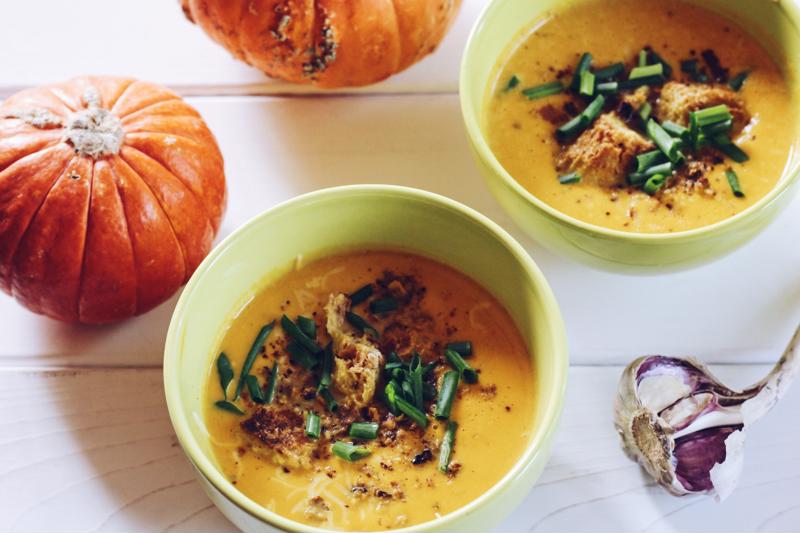Plating your entrees is just as much about combining complementary flavors and aromas as it is about curating a beautiful dish worthy of Instagram. Austin culinary students will soon learn that a vegetable puree can be just the thing to tie a dish together.
Most vegetable purees come down to three components: a vegetable, a liquid and butter (or ghee or oil).
But don’t confuse a short ingredients list with a simple process. Vegetable purees can be tricky. Do it wrong and you may wind up serving watery, gray mush, or just the opposite – a grainy slop that’s unpleasant to eat.
Let’s take a look at the basic steps of making any vegetable puree:
1. Cook the vegetables
The method of cooking you choose depends on the ingredients you work with.
 Vegetable puree can be just the thing to tie a dish together.
Vegetable puree can be just the thing to tie a dish together.Most veggies can be boiled, but some are better off being baked, steamed or sauteed first. In any case, you’ll need to prepare the veggies by removing any tough skins and cutting off any ends you don’t want mixed up in your final product, like the tips of carrots or stringy fibers in celery.
If you’re boiling, barely cover the veggies with a liquid like water or stock. Serious Eats recommends one part cream to three parts stock for a great texture and delicious flavor.
Cook the vegetables fully, but don’t overcook them; doing so will sacrifice flavor and color.
For vegetables that get waterlogged easily like eggplant, baking or sauteing usually leads to better results than boiling, Serious Eats explained. Baba ghanouj, a Middle Eastern spiced eggplant puree, usually begins with roasting or grilling the vegetable for about 25 minutes before adding tahini, lemon juice, garlic, salt and pepper, according to The New York Times.
When the vegetables are completely cooked, drain them and move onto the next step.
2. Puree the vegetables
There are several options for this step. Stand blenders, immersion blenders and food processors are popular.
If you use a stand blender, remember to accommodate the steam. If the vegetables are still hot from cooking, they produce a lot of steam, which can build up pressure in an enclosed area. Eventually, something will have to give, and it’ll probably be the lid of your blender, leaving you and your kitchen covered in hot, mushy food. Prevent this by letting the food cool a bit before processing, leaving the lid cracked just a bit or keeping the vent open, if the lid has one.
Other options include using a food mill or the old-fashioned hand-mashing method. These are particularly great for starchy foods like butternut squash puree. If you try to use a blender with these, they’ll probably gum up the blades.
If your blender allows for it, begin slow and increase speed over time. As you puree, transition to the last step: adding liquid.
3. Add liquid
If you chose to boil your veggies in cream and stock, now’s your chance to reclaim those creamy, rich flavors. As you puree, slowly ladle the liquid into the mixture, paying close attention to consistency. You’ll probably want it a little bit thick so it holds its shape and can be dolloped atop some pita or smeared alongside your entree without running all over the plate. That said, it should also be somewhat thin so it’s malleable and dippable.
If you didn’t boil in cream and stock – or didn’t boil at all – choose a warm liquid that will support the taste (water works, but why skimp on flavor?). Chicken or vegetable stock or vegetable juice are all great options. Now is also the time to mix in some creaminess. Butter, ghee, oil or cream will all do the trick.
Lastly, you can plate your bright, vibrant puree – or just grab a spoon and enjoy.



